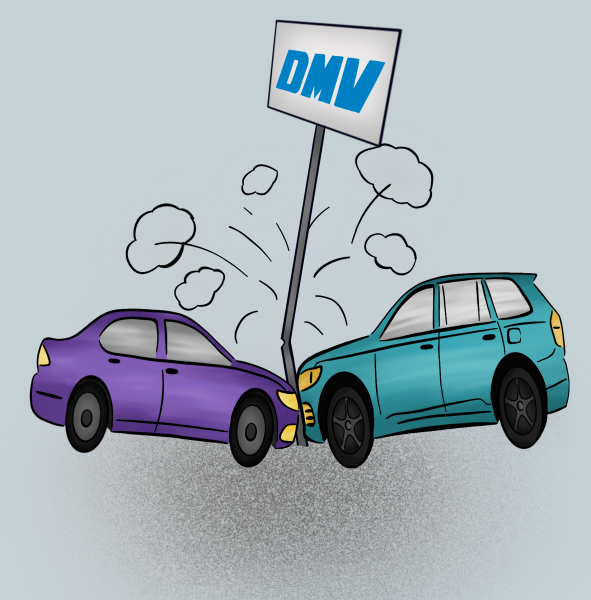Wealth Still Winning College Acceptance Battle
March 23, 2017
With the SAT might better fit as an acronym for “standardized affluence test” rather than its actual meaning (standardized aptitude test), and with the student bodies of America’s most prestigious colleges and universities serving more of the top 1% than the bottom 60% of American families in terms of economic rank, a socioeconomic gap between low-income students and collegiate as well as post-collegiate success stands like the Grand Canyon.
As an affluent student with access to SAT classes, $400 online SAT tutoring and free-range of my mother’s Amazon account to purchase SAT prep books –fourteen of which now reside in my room– the suggestion that standardized testing is an unfair assessment of intellectual aptitude would seem an issue far from my immediate concerns.
Among my well-funded peers in Lamorinda I’ve noticed 3 distinct groups of test takers: those with scores making them competitive for top colleges, those with what would be considered excellent scores for all but the Ivy and Ivy-equivalent schools, and those who do not study for the tests. None of these groups lacks access to preparatory resources. An individual in any of the 3 camps faces, with exception of the inherent factor of intelligence, no barrier to the achievement of a score which would distinguish them at the admissions office of their choice college. It is logical, then, that before last week I understood student scoring on standardized testing as the product of, and therefore an issue pertaining to, willpower, and not resources.
Logically, the injustice I 1st saw in standardized testing was my own. Selfishly, what I perceived as my own injustice, and which happens to not be an issue of justice whatsoever, blinded me from the boundaries placed on students by real injustices within the world of the SAT. Being in the 2nd camp of test takers, earning a score that appears to leave me short of gaining admission to my school of choice, I resented my exceptionally-scoring friends.
I spent last summer locked in my room, pouring over grammar rules and mathematics tactics. I obsessively trolled College Confidential, a college admissions version of Yahoo Answers, rife with similarly anxious high schoolers. I found myself much too amused with one user’s comment that they had turned their bedroom into a prison filled with Barron’s SAT math books and had taken to eating Hot Pockets rather than spending time cooking “real” food.
One of my definitive high school anecdotes is a story of a friend whose ACT prepbook, due to its weight, broke through the bottom of her bag, falling onto the streets of Los Angeles, where she was pouring over punctuation instead of palm trees and memorizing sentence structure instead of suntanning.
With friends whose ACT and SAT scores will make colleges take note –some earned by studying, some by true aptitude– with a 36 ACT, multiple 35 and 34 ACTs and SATs in the 1500s among them (the ACT is scored out of 36, the SAT out of 1600; the national average ACT is a 21, the SAT a 1000, putting my high scoring friends well into the 90-something percentile, or among the top-scoring students in the nation), my 1400 SAT, within the 97th national percentile (meaning higher than 97% of American test takers), pales in comparison. The injustice of not being able to score higher than I have is not an injustice at all; it is not a discrimination that any institution or power has perpetrated against me. The number is actually the indication of my own inherent intellectual aptitude.
That my score is within the 97th national percentile (putting me within the bottom 25% of scorers at Princeton, a dismal position to be in for one who is obsessed with acceptance to that particular institution), is not an issue of financial want.
Yet, there are those who do suffer a disadvantage precisely because of economics. This was brought to my attention last week by the editor-in-chief of one of the literary magazines in the Nassau Weekly, one of Princeton’s student publications, to which I have been a contributor.
Knowing her only by reading her stories and poems, publishing under her direction, chatting on the Tunnel staff Facebook Messenger group chat, I had no knowledge of her socioeconomic situation. When I stumbled across a photo of her on her Facebook, an ecstatic high school senior smiling beside a chalk drawing of Princeton’s logo, I had no reason to believe she was anything other than another privileged student like me. In the ad on the same page for a writing club meeting she promised a abundance of snacks; in what appeared to be an image of prom or ball she wore intricate white lace. In the name of the newspaper at which she worked was an apparent connection to a high school belonging to a wealthy Southern California district.
In her ‘Taxonomy of Wealth,’ an article I read on my i-Phone, perusing the aisles at Target, the Somi I thought I knew morphed into a different Somi entirely. A Somi who wore worn tennis shoes instead of one who stepped in the gleaming ballet flats I’d affixed to an image of feet crossing the quad at Princeton. A Somi who commuted long hours to school instead of one who drove a family BMW the length of a few neighborhood blocks.
“If you catch me off guard,” she writes, “I may unwittingly state that my $85 Nikes are cheap and so, by extension, is my family,” revealing how difficult it is to be from a less-than-loaded family at a private institution such as Princeton which, according to a New York Times article, is one of 38 schools with more students from the top 1% than the bottom 60% percent of average American income brackets.
“We all want to know why we are here,” Somi’s article reads. “We think we know the answer. We deserve to be here because we are smart, talented, and passionate. We earned it – this is what administration tells us and what friends reaffirm. Indeed, I have met some of the most intelligent, hard-working students at this school and I count myself as one of them. But the way wealth works at Princeton proves that the vast majority of us aren’t here because of individual merit. We’re here because the people in our lives provided for us.”
Recent studies confirm as much. “The gap in student achievement, as measured by test scores between low-income and high-income students, is a pervasive and longstanding phenomenon in American education, and indeed in education systems around the world,” writes Martin West, an author of a recent Harvard Graduate School of Education study which probed the correlation of test scores and annual familial income.
So what does that mean for the American college admissions process? It means the gaping irony that the SAT, a test designed to act as a national academic equalizer, has put up more barriers rather than level the playing field of college admissions.
The SAT is a test for which wealthy students have an inherent advantage. While less research has been done on the relatively newer ACT, for the purpose of addressing standardized testing as a whole, I’ll speak of the SAT as America’s standardized test of college readiness.
For all intents and purposes the SAT is America’s standardized test; dozens of top colleges, with schools like Princeton and Yale among them, require students take SAT subject tests. While the ACT is an equivalent for the SAT proper, there are no accepted alternatives to the College Board’s AP and SAT subject tests, meaning the College Board has a monopoly, or the exclusive possession or control of the supply or trade in a commodity or service, of that facet of American standardized testing.
The ethics concerns of a company with a monopoly at all, or a company which is a monopoly with the license to market materials to aid in preparation for tests mandatory for admission at a good number of American institutions, both public and private, is a whole different issue. The disparity in standardized test scores, and as a result, of those scores in college admission rates between test takers from high versus low socioeconomic classes, is glaring.
One such disparity is due to what can be called an ethical loophole which the College Board has done little to close. This loophole is the College Board’s SAT testing option of “Extended time,”‘ in which test takers with documented mental health challenges or learning disabilities are able to receive anywhere from additional half time to as much as double the standard allotted time to complete the test.
While this at first appears to be a positive –why not help those with mental health challenges or learning disabilities be provided the resources they need to perform as well as their peers?– wealthy test takers and their families have exploited the loophole so that “extended time” has morphed from a helpful service to those in need to a route through which the privileged can effectively purchase certain scores and thus gain an immeasurable leg up in the college admissions game.
Before I went to writing camp at Kenyon college I had never heard of SAT extra time, but at camp, a selective summer program which, with a near $3,000 price tag, proved to be just the wealthy-kid haven one might expect. 2 friends of mine from Kenyon, now both accepted to Ivy League universities, admitted to such an admissions tactic. With psychiatrist diagnoses of “generalized anxiety disorder” each were able to acquire extra time despite having 4.0 GPAs and no previous record of academic testing adjustments.
One of these friends, who also spoke of the ease of obtaining extra-time, estimated that a near half of her high school class in receive extra time.
ABC news confirmed as much.”At the elite Wayland High school outside Boston,” it reports, “the number of students receiving special accommodations is more than 12%, more than 6 times the estimated national average of high school students with learning disabilities.”
Outside of the immorality of the situation, how is it that students without learning disabilities qualify for so-called “extra-time”?
According to ABC news, doctors such as Pasedena, California’s Steven Mouten, a licensed clinical psychologist, charges $1,500 for a diagnoses. The probability of his diagnosing a learning disability for your child? 90%, a number glaringly higher than the national percentage of students with learning disabilities which, according to the National Center for Education Statistics (NCES) is a much lower 13%.
In other words, parents with the financial flexibility to do so can buy their kids extra time under the guise of a learning disability.
With students taking advantage of such a loophole, the results are drastic. Given the unethical nature of such a practice, traditional data on the topic is not online, though comments on college admissions sites such as College Confidential reveal their own figures, which peg “extra time” as being responsible for hundreds of points added to their “real,” or non-extra time scores.
With college acceptance rates lower than ever, the stakes are high, and with standardized tests acting as a disenfranchising rather than an equalizing force, the old aphorism that “The rich get richer and the poor get poorer,” seems to apply much more fittingly to our country today than we, under our guise of social mobility, would presently like to admit.



